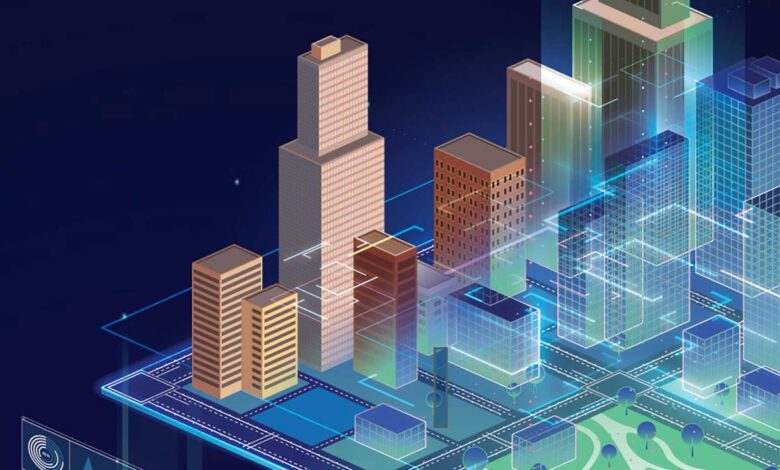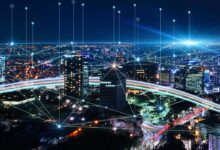Digital Twin Technology Brings A New Intelligent Reality

The world is on the cusp of a revolutionary change, one that is blurring the lines between the physical and digital realms. At the heart of this transformation lies digital twin technology, a powerful and versatile tool that is fundamentally reshaping how we design, build, and operate everything from a single product to an entire city. A digital twin is a virtual, real-time replica of a physical object, process, or system. It’s a living, breathing model that is continuously updated with data from its physical counterpart, allowing us to simulate, analyze, and optimize performance in a risk-free virtual environment. What was once a niche concept for a few high-tech industries has now blossomed into a global movement, driven by the convergence of the Internet of Things (IoT), artificial intelligence (AI), and cloud computing. This article will take a deep dive into the core concepts of digital twin technology, its game-changing applications across various sectors, the significant challenges that still need to be addressed, and the immense opportunities that lie ahead for a more efficient, sustainable, and intelligent future.
What is the Digital Twin?

To truly grasp the power of digital twin technology, you must first understand its core principles. It’s a feedback loop between the physical and digital worlds, creating a dynamic and continuously evolving model.
A. The Three Essential Components
A functional digital twin is not a static model; it’s a dynamic system built on three essential components.
- The Physical Object: This is the real-world asset that the digital twin represents. It can be a single component, a machine on a factory floor, a building, or even a living person. The physical object is equipped with an array of sensors that collect a continuous stream of data about its performance, condition, and environment.
- The Digital Model: This is the virtual replica of the physical object. It’s a software-based model that can be a simple 3D representation or a highly complex, multi-layered simulation. The digital model is where the data is processed, analyzed, and visualized. It’s where we can run simulations, test new designs, and predict future outcomes without ever touching the physical world.
- The Data Connection: This is the bridge between the physical and digital worlds. The data from the sensors is continuously fed to the digital model, ensuring that the digital twin is a real-time, accurate reflection of its physical counterpart. This real-time data is what makes the digital twin so powerful, as it allows for immediate analysis and proactive decision-making.
B. The Levels of Digital Twin Maturity
The maturity of a digital twin can be categorized into different levels, based on its functionality and the complexity of the data connection.
- Descriptive Digital Twin: This is a basic 3D model that simply describes the physical object. It’s a static representation and is often used for visualization and design purposes.
- Informative Digital Twin: This level adds data to the model. The digital twin can display real-time sensor data from the physical object, such as temperature, pressure, or energy consumption. This allows for simple monitoring and analysis.
- Predictive Digital Twin: This is a major leap forward. The digital twin uses AI and machine learning to analyze historical data and predict future outcomes. For example, it can predict when a machine is likely to fail, allowing for proactive maintenance and preventing costly downtime.
- Prescriptive Digital Twin: This is the most advanced level. The digital twin not only predicts an outcome but also recommends the best course of action to optimize performance or prevent a problem. It can even autonomously take action, such as adjusting the settings on a machine to increase efficiency.
The New Frontier
The transformative power of digital twin technology lies in its ability to solve complex, real-world problems across a wide range of sectors.
A. Manufacturing and Industrial Optimization
Digital twins are revolutionizing the manufacturing industry by creating a new level of efficiency, precision, and resilience.
- Smart Factories: An entire factory can have a digital twin. This twin can be used to simulate production lines, optimize workflows, and test new layouts without interrupting production. This allows for a continuous process of improvement and a more agile response to market changes.
- Predictive Maintenance: A digital twin of a machine can analyze data from its sensors to predict when it will fail. This allows a company to schedule maintenance proactively, preventing a costly and unscheduled breakdown.
- Product Lifecycle Management: A digital twin can track a product from its initial design to its end of life. This provides valuable insights into how a product is used in the real world, allowing engineers to improve future designs and create a more durable and efficient product.
B. Urban Planning and Smart Cities
The world’s cities are becoming more complex, and digital twins are providing a powerful tool for urban planners to manage this complexity.
- Urban Simulation: A digital twin of a city can be used to simulate everything from traffic flow and air quality to the impact of a new building on the urban landscape. This allows city officials to make data-driven decisions about urban planning, infrastructure development, and resource management.
- Emergency Response: A digital twin of a city could be used during a natural disaster or a large-scale emergency. It could provide real-time information on traffic, infrastructure damage, and the location of emergency vehicles, allowing for a more coordinated and effective response.
- Infrastructure Management: A digital twin of a city’s infrastructure—from its water pipes to its power grid—can be used to monitor performance, predict maintenance needs, and optimize resource distribution.
C. Healthcare and Medicine
The application of digital twins in healthcare is a new and exciting frontier that promises to revolutionize personalized medicine and medical training.
- Digital Twin of a Person: The most personal digital twin of all would be a virtual replica of a human being. This twin would be continuously updated with data from a person’s wearables, medical records, and genetic information. It could be used to simulate the effect of a new drug, predict the onset of a disease, or create a personalized treatment plan.
- Medical Training: Surgeons can train on a digital twin of a patient, practicing a complex procedure in a risk-free virtual environment before going into the operating room. This reduces the risk of error and leads to better patient outcomes.
- Personalized Implants: A digital twin of a patient’s bone or organ can be used to design a perfectly customized implant or prosthetic, leading to a better fit and a faster recovery.
Challenges and Opportunities

While the potential of digital twin technology is immense, its journey to mainstream adoption is not without its significant challenges.
A. Data Integration and Interoperability
The creation of a digital twin requires the integration of vast amounts of data from a wide variety of sources, from IoT sensors to legacy systems. Ensuring that all this data is clean, consistent, and can be easily shared between different platforms is a major technical hurdle.
B. The Cost of Implementation
The initial cost of implementing a digital twin, particularly for a large-scale system like a smart city, can be prohibitive. The sensors, the software, and the data infrastructure require a significant investment. As the technology matures and becomes more accessible, the cost of implementation will fall, but for now, it is a major barrier to adoption.
C. Data Privacy and Security
The vast amount of sensitive data collected by a digital twin, particularly a digital twin of a person, raises serious concerns about privacy and security. Who owns this data? How is it stored and secured? A data breach could have devastating consequences. New regulations and a commitment to ethical data management are essential to build public trust.
Conclusion
Digital twin technology is no longer a futuristic concept but a present-day reality that is fundamentally reshaping our world. It is a powerful fusion of the physical and digital, creating a virtual mirror that allows us to simulate, analyze, and optimize with a level of precision that was once impossible. The applications are as vast as they are transformative, from creating more efficient and resilient factories to designing smarter, more sustainable cities. The potential to create a digital twin of a human being is perhaps the most exciting and profound application, promising a new era of personalized medicine and a deeper understanding of human health.
However, as we embrace this new era, we must also confront the significant challenges that lie ahead. The technical hurdles of data integration and the high cost of implementation are not insignificant. More importantly, we must address the ethical and societal questions that come with a technology that collects such a vast amount of sensitive data. Issues of privacy, security, and data ownership are paramount and will require a collaborative effort between technologists, policymakers, and the public. The future of digital twin technology is a journey that will be defined not just by its technological prowess but by its ability to create a world that is not only more efficient and intelligent but also more secure, equitable, and human-centric. The digital twin is not just a tool for optimization; it is a new lens through which we can see and shape our future.

